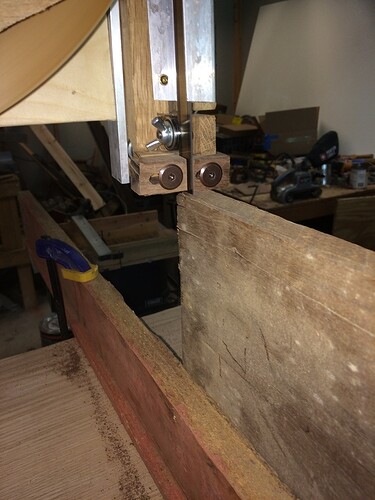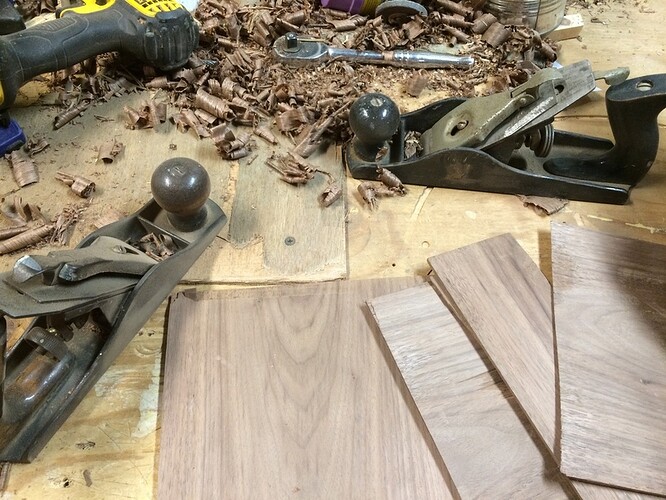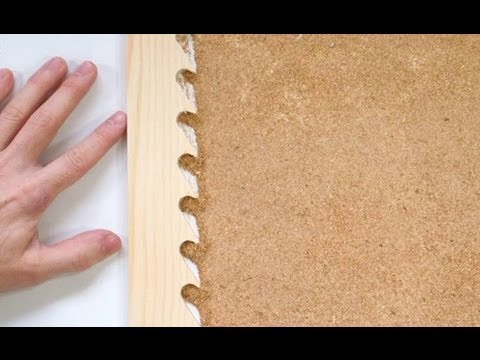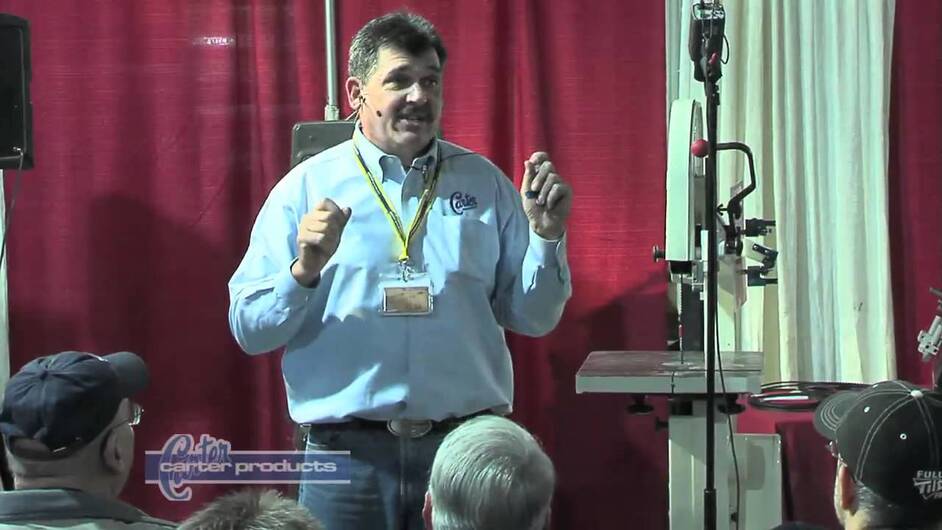KSet up the bandsaw to try and resaw some walnut. It worked but just barely. The 1/2 horse 1725 rpm just doesn’t have the power. It was slow and kept catching. I did manage to make some 1/4 stock and thinner using hand planes and a belt sander to finish. The wildest thing was that after church today, a parishioner stopped me. He used to run a lumber company and has seen the bandsaw. He told me it was underpowered for any hard and wider pieces. Well, today he dropped off a refurbished 2 horse 3450 rpm motor single phase wired at 110 for now. Tomorrow I’ll install and and see what I can do.
whoops need to get into the habit of putting my planes down on their side.I recently saw a video about resawing wide boards. I’m not a woodworker myself, so I don’t know if the information in this video is common knowledge or if it may be revelatory for newbies and the experienced alike. Here it is for anyone interested…
I’d recommend this channel, “Matthias Wandel”, to anyone who likes to build things, even if those things are never out of wood.
3hp will let you saw through dang near anything, be careful!
Since your bench is wood, setting them on the blades isn’t so much an issue. I usually keep a piece of scrap on the bench to prop them up. Setting them on their sides can be problematic for your finger tips! 
Wowsa. I lost track of this thread back at about 200. Some awesome pieces. I forgot to dispense likes as I caught up… woops.
The earlier conversation about neodymium magnets reminded me of Terry Pratchett  Nanny Ogg writes home and (paraphrasing from memory) “…while she can remember how to start spelling banana, can never quite remember how to stop… banananananana daiquiri”
Nanny Ogg writes home and (paraphrasing from memory) “…while she can remember how to start spelling banana, can never quite remember how to stop… banananananana daiquiri”
My itch to stop being a pansy and start making things has certainly skyrocketed while reading this. I know I have made quite a few things previously, but I can rarely remember what. I have repaired a ton, touched up a plethora… but not much I have made in the physical realm.
I do wish some more people would show off electronic/code creations. Don’t let those physical types have all the fun! (I’d show off my own code, but it has almost always been behind the scenes type of capability for others to use. Never any stand-alone programs/apps)
In addition to the larger motor make sure your blade is wide enough. 1/2" minimum - 3/4" preferred.
Lord that would make my current project so much easier! I’m building hardwood counter tops out of Ash, and the rough cut lumber is much more roughly cut than I had expected (first project like this, I’ll take some pics)!
Be careful, the thrill of making and having stuff that you made is addictive…
I spent an hour last night going through his bandsaw videos again just to get that info back into my mind and also refresh on blade speed. It’s his design that I used. He is my maker hero!
I have a 3/4 and a 1/2 in. This is the first time I loaded the 3/4 and that is what made me understand I needed a bigger motor. The 3/16 blade does well for smaller cuts but for resawing I understand the width makes a difference. Thanks. It’s a lays amazing when mutual interests combine. This forum has been so helpful to prod me on to finish.
That new motor fits the scale of your saw, very nice of him! That puts the tool’s capability up into the professional realm! Speed control?
Black walnut is on a short list of my favorite woods, nice work & great job fabricating that saw!
I have a 14" bandsaw and using a good 3/4" blade makes all the difference in resawing.
A really good YouTube video by Alex Snodgrass on set up is worth the watch.
The wider the blade the more important it is that your guides be accurately set and smooth running.
Getting enough tension on a wide blade like that is also critical to keep the blade from flexing and wandering around. A 3HP motor is massive for a saw that size! Be careful…
That new motor fits the scale of your saw, very nice of him! That puts
the tool’s capability up into the professional realm! Speed control?
Speed control hmmmmmm. Don’t think I’ve ever heard of a speed control on a bandsaw. It sure comes in handy on my lathe though.
I’ve got a 220 volt 14" Laguna, and that puppy slices through wood like butter…I highly recommend it to anyone!
Right on! I was thinking about mentioning how Matthias had made his own band saw out of wood (and a variety of other tools) to give him some cred, then I noticed that your saw was wooden too. It didn’t occur to me that it was the same design, how cool is that!?
Mine too!
I had no idea not being indoctrinated on a band saw, just that a 3450 motor sounds fast. Works good on my diamond saw, but a high velocity on a long blade like that would give me the “willies” in it’s proximity!
I use speed control on so many things; an angle grinder, a wet grinder, drill press, cordless drill, multi tool, handpiece… speed control gives a degree of control over material removal and tool temperature - I just assumed it would be advantageous.
Seems blade tension is critical, and higher temps make the blade longer… obviously I have a lot to learn about that tool.
Lots of “wood only” bandsaws are single speed, but you need to step them down for metal. In a pinch you can cut aluminum on a wood saw, but I’ve never been brave enough to give it a try on mine (plus not wanting my wood saw all gummed up with swarf). I think you can also think of the TPI of the blade as setting the speed in a sense.
Thanks!
Yeah, I read I could cut aluminum plate on a wood saw with a carbide blade if you limit the cut to no more than 1/8 at a pass.
I did it, but my ears still ring, and the swarf is hot with a Capitol F!
Main things I would worry about would be actual speed of belt. Most band saws have a smaller pulley on the motor shaft that turns a large larger one which the blade rides on. The real problem that may come is the belt slipping due to speed vs torque required to turn the large pulley. My suggestion right off would be to up the pulley size on the shaft to lower the torque curve on turning the larger pulley. Remember it will drastically effect speed when you upsize the motor pulley. But this will not necessarily negatively effect cutting of the wood, most saw blades cut better and last longer at a slower speed. Plus when you load up the saw by cutting wood you will have less belt slipping.
you can buy an AC drive control for around 100-200 dollars that will control the speed of anything you want to hook up to it. We have one we use to show customers onsite that is small but usually deal with very large units that cost in the 10’s of thousands. Baldor makes a very reliable drive unit that ships ready to use in case with simple up and down arrows. When you become more comfortable you can program them with torque curves and max/min speed settings.
Thank you!
I invested in a control years ago for the Foredom handpiece that has a high amp rating, and can crank a 4" angle grinder(any brushed motor) down to a crawl, and when you load it - it keeps the set rpm. Damn handy.



